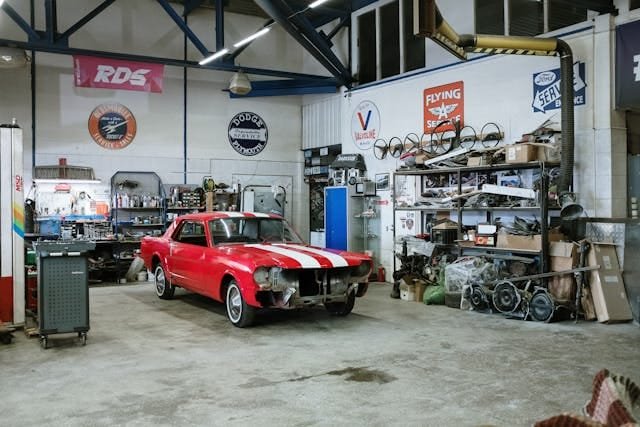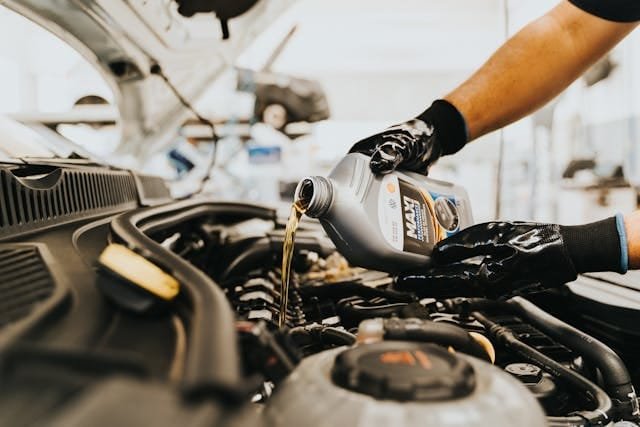Engaging in DIY car maintenance is an empowering approach for vehicle owners that not only fosters a deeper understanding of their automobiles but also generates significant cost savings over time. The concept revolves around the implementation of simple car maintenance checks that vehicle owners can undertake independently, thus minimizing the need for costly mechanic visits. These tasks may include basic checks such as tire pressure, oil levels, and the functionality of lights and wipers.
A common misconception surrounding DIY car maintenance is the belief that such tasks require extensive mechanical knowledge or specialized tools. In reality, many basic car maintenance tasks are straightforward and accessible to beginners. For instance, checking tire pressure, which is a simple car maintenance check, can be accomplished with a basic tire gauge and ensures optimal vehicle performance while also enhancing safety.
Furthermore, taking proactive measures towards vehicle care not only extends the longevity of one’s vehicle but also fosters a sense of responsibility and engagement with one’s asset. By adopting these DIY car maintenance tips, owners can address minor issues before they escalate into expensive repairs, exemplifying the fundamental principle of preventative car maintenance you can do at home. Simple car battery maintenance tips, such as cleaning terminals or checking connections, can be effective practices to keep your car running smoothly and reliably.
Thus, DIY car maintenance offers a practical avenue for car owners to save money on car maintenance while ensuring that their vehicles remain in optimal condition. The initiative to carry out these basic checks can lead to a greater appreciation for one’s vehicle, reinforcing the notion that conscientious care pays dividends in the long run.
Essential Checks for Optimal Vehicle Performance
Maintaining optimal vehicle performance is crucial for ensuring the longevity and reliability of your car. Regular checks not only enhance driving experience but also minimize repair costs. Here, we outline several simple car maintenance checks that every vehicle owner can perform to keep their car running smoothly.
First, checking fluid levels is paramount. Ensure that your oil, coolant, and transmission fluid are at their proper levels. Low oil levels can lead to engine damage, while insufficient coolant may cause overheating. A simple dipstick can be used for oil checks, while coolant levels can typically be observed through a clear reservoir. Having the right tools, like a funnel for refills, can facilitate this process.

Next, inspecting belts and hoses is essential. Look for signs of wear such as fraying or cracking, which could lead to system failures. Most vehicles have belts for the alternator and other components, and hoses that transport fluids. A visual inspection should be performed regularly, and any irregularities should prompt immediate attention to prevent further complications down the line.
Another vital aspect of basic car maintenance for beginners involves monitoring tire pressure and tread depth. Keeping your tires properly inflated is not only a simple car maintenance check but also enhances fuel efficiency and ensures safety. Use a tire pressure gauge to confirm that your tires meet manufacturer recommendations. Tread depth can be assessed using the penny test; insert a penny into the tread, and if you can see all of Lincoln’s head, it’s time for new tires. A simple DIY tyre pressure check can save money in the long run by extending tire life and improving speed stability.
Additionally, checking car lights and wipers yourself is a straightforward task that improves safety. Ensure headlights, brake lights, and turn signals are functioning. Wiper blades should also be examined for wear, as visibility is essential, particularly in inclement weather. Investing a little time in these preventative car maintenance practices can lead to significant savings on car maintenance over time.
Cost-Effective Maintenance Tips and Tricks
Maintaining a vehicle doesn’t have to be an expensive endeavor. With a few diy car maintenance tips, you can perform simple car maintenance checks that not only keep your vehicle in good condition but also help you save money on car maintenance. One of the most effective strategies is using common household items for cleaning and maintenance tasks. For example, using vinegar and baking soda can be a powerful combination for cleaning battery terminals or removing dirt and grime from your car’s interior.
Another valuable resource is online platforms that offer tutorials and guides on various car maintenance tasks. From changing oil to replacing air filters, these resources provide step-by-step instructions that make it easier for beginners to grasp basic car maintenance. Websites, YouTube channels, and forums dedicated to car owners can significantly enhance your ability to tackle basic repairs and checks independently, reducing the need for professional help.
Additionally, performing simple car battery maintenance checks such as inspecting cables for corrosion or ensuring the terminals are secure can extend the life of your battery. Another essential area to focus on is ensuring your tyre pressure is optimal; a diy tyre pressure check save money that can dramatically improve fuel efficiency. It is important to invest time in checking car lights and wipers as well. This ensures safety and avoids unnecessary costs associated with accidents caused by malfunctioning lights.
It is equally crucial to recognize when to seek professional assistance. Some repairs may require specialized tools or expertise, and knowing your limits is a vital part of vehicle maintenance. Nevertheless, with the right approach, you can successfully manage many aspects of your vehicle’s upkeep, contributing to a more cost-effective maintenance routine while empowering yourself with knowledge about your car.
Creating a DIY Maintenance Schedule
Establishing a DIY maintenance schedule is an essential step in ensuring your vehicle remains in optimal condition. A tailored schedule not only addresses the specific needs of your car but also aligns with your driving habits. The first step in creating your schedule is to familiarize yourself with your vehicle’s owner manual. This document provides crucial information regarding recommended maintenance intervals, allowing you to identify simple car maintenance checks that need to be performed regularly.
Next, consider the frequency and nature of your driving. For instance, if you frequently commute long distances or drive in harsh weather conditions, you might need to adjust your maintenance timeline accordingly. Tracking your car’s performance and any maintenance history can also help inform your schedule. Regularly note any issues or repairs, which will assist you in determining when a more in-depth service might be required.

To keep organized, utilizing digital tools can significantly enhance your scheduling efforts. There are numerous apps available that can remind you when to perform routine maintenance and log completed tasks. These applications usually allow you to set alerts for oil changes, tire rotations, and other simple car maintenance checks. For those who prefer a physical method, employing a planner or vehicle maintenance logbook can also be effective in tracking maintenance schedules and history.
Incorporating preventative car maintenance you can do at home into your DIY schedule promotes a proactive approach to car care. Simple car battery maintenance tips, checking tire pressure, and monitoring car lights and wipers are fundamental tasks that can be accomplished with minimal tools. Consistency with your DIY maintenance schedule not only saves money on repairs but also extends the lifespan of your vehicle, making it a worthwhile investment of your time and effort.



